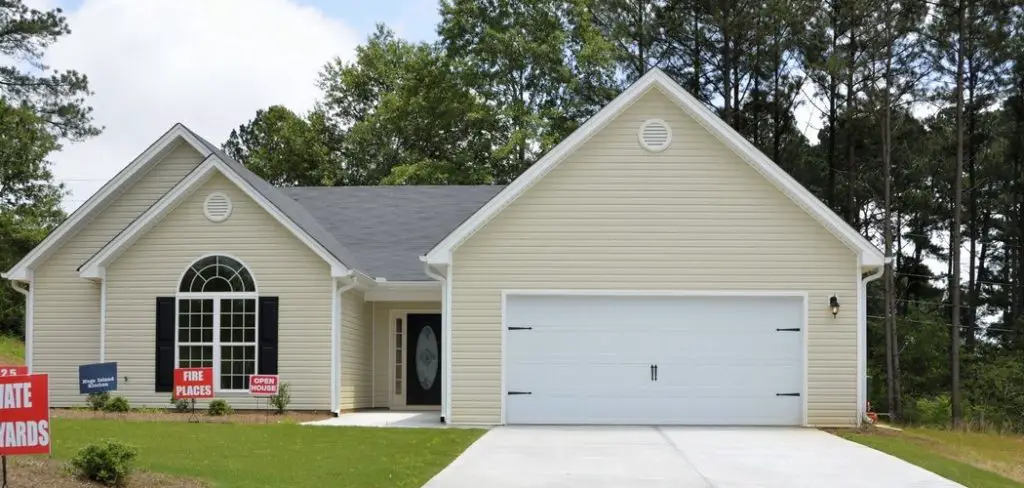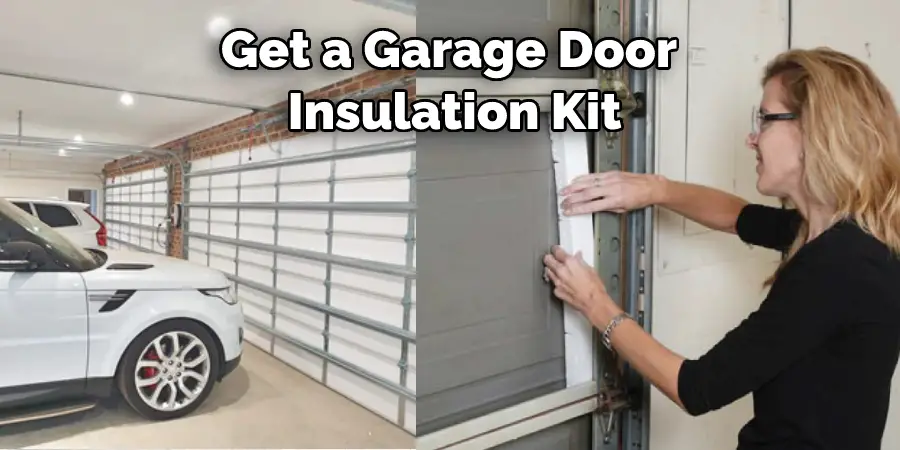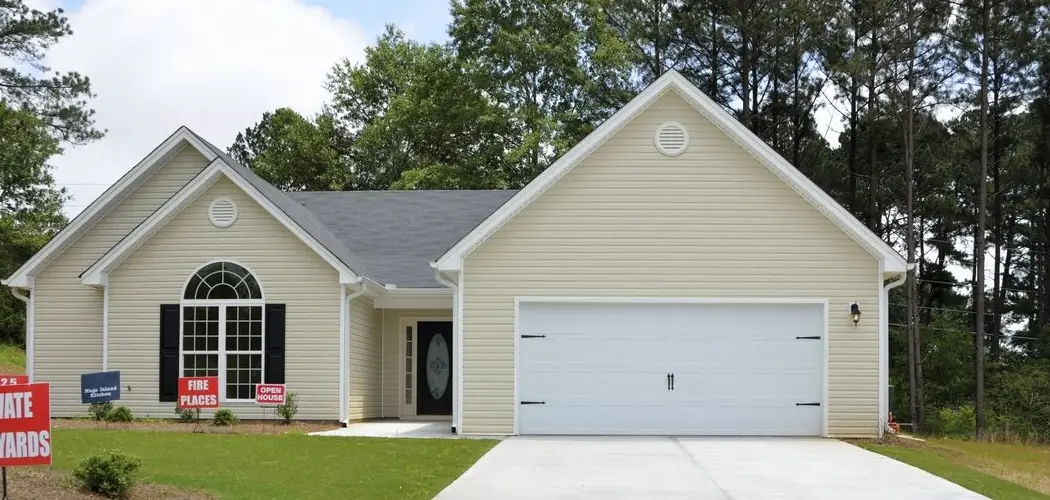A garage can be a great place to store cars, tools, and other equipment. However, if not temperature controlled, the garage can become an uncomfortable and expensive place to be in the summer and winter months. This blog post will give you tips on how to temperature control a garage. We will also estimate how much it could cost to do so.

Summary: If you’re looking to temperature control your garage, there are a few things you can do to make sure it’s a comfortable space year-round. You can also install weatherstripping around your garage door to prevent drafts. Another option is to install a garage heater, whether electric or gas, to keep the space warm in the winter.
Why It’s Important to Temperature Control Your Garage
There are a few key reasons why you should consider temperature controlling your garage.
- The first reason is for the protection of your belongings. Extreme temperatures can damage items such as electronics, clothing, and even food.
- The second reason is for your own comfort. Working in a garage that’s too hot or too cold is no fun.
- The third reason is energy efficiency. Keeping your garage at a comfortable temperature can reduce your energy consumption and save money on your utility bills.
- The fourth reason is for the safety of your family. If you have young children or pets, they can be at risk of heatstroke or hypothermia if they spend too much time in an uncontrolled garage.

5. The fifth and final reason to temperature control your garage is to protect your car. Extreme temperatures can cause damage to your car’s paint, tires, and interior.
20 Effective Steps How to Temperature Control a Garage:
Step 1: Assess Your Garage’s Insulation
The first step in temperature control is to evaluate the insulation in your garage. Check the walls, ceiling, and garage door for adequate insulation. Proper insulation helps maintain a consistent temperature by reducing heat transfer between the garage and the outdoors.
Step 2: Insulate the Garage Door
A poorly insulated garage door can significantly impact the garage’s temperature. Insulate your garage door using an insulation kit, or consider replacing it with an insulated garage door. These options can help improve energy efficiency and maintain a more consistent temperature inside the garage.
Step 3: Seal Gaps and Cracks
Identify any gaps or cracks around windows, doors, and walls that may allow drafts or air leaks. Use weatherstripping, caulk, or expanding foam to seal these gaps and improve the overall energy efficiency of your garage.
Step 4: Insulate the Walls and Ceiling
If your garage walls and ceiling are not adequately insulated, consider adding insulation materials such as fiberglass batts, rigid foam panels, or spray foam insulation. Insulating the walls and ceiling will help maintain a consistent temperature inside the garage and reduce energy costs.
Step 5: Install a Garage Heater
If you need to warm your garage during colder months, consider installing a garage heater. There are various types of garage heaters, including electric, propane, and natural gas heaters. Choose a heater that is appropriate for your space and energy needs, and ensure it is installed and operated according to the manufacturer’s instructions.
Step 6: Install an Air Conditioning Unit or Evaporative Cooler
To cool your garage during warmer months, consider installing an air conditioning unit or an evaporative cooler. Portable or window-mounted air conditioning units can be effective for smaller garages, while a mini-split system may be more suitable for larger spaces. Evaporative coolers work best in dry climates and can be an energy-efficient option for garage cooling.
Step 7: Improve Ventilation
Proper ventilation is essential for maintaining a comfortable temperature in your garage. Ensure that your garage has adequate air circulation by installing vents, exhaust fans, or a ventilation system. This will help remove excess heat and humidity, contributing to a more consistent temperature.
Step 8: Use a Dehumidifier
Excess humidity can make your garage feel hotter during the summer months and can lead to condensation and mold growth. To control humidity levels, consider using a dehumidifier in your garage. This will help maintain a comfortable temperature and improve air quality.
Step 9: Install a Programmable Thermostat
A programmable thermostat can help you maintain a consistent temperature in your garage by allowing you to set desired temperature levels for different times of the day or week. This can help reduce energy consumption and maintain a more comfortable environment in your garage.
Step 10: Utilize Fans for Air Circulation
Using fans to circulate air can help regulate the temperature in your garage. Place floor or wall-mounted fans strategically to create optimal air circulation and maintain a more consistent temperature throughout the space.
Step 11: Use Energy-Efficient Lighting
Traditional incandescent light bulbs can generate heat, contributing to higher temperatures in your garage. Consider replacing them with energy-efficient LED or CFL bulbs that produce less heat and consume less energy.
Step 12: Insulate Windows
If your garage has windows, consider using window insulation film, thermal curtains, or cellular shades to minimize heat transfer through the glass. These measures will help maintain a more consistent temperature inside the garage.
Step 13: Install Radiant Barrier
Installing a radiant barrier on the ceiling or walls of your garage can help reduce heat transfer, keeping your garage cooler in the summer and warmer in the winter. Radiant barriers work by reflecting radiant heat, reducing the amount of heat absorbed by the garage’s interior surfaces.
Step 14: Paint the Garage Door and Exterior Walls
Consider painting your garage door and exterior walls with a light, reflective color. Light-colored paint can help reflect sunlight and reduce heat absorption, contributing to a cooler garage during the summer months.
Step 15: Plant Shade Trees or Install Awnings
To help keep your garage cooler during the summer, plant shade trees or install awnings around the garage. These measures can help block direct sunlight, reducing heat transfer and keeping your garage more comfortable.
Step 16: Monitor Temperature and Humidity
Regularly monitor the temperature and humidity levels in your garage using a digital thermometer and hygrometer. This will help you identify any issues with temperature control and make adjustments as necessary.
Step 17: Regularly Maintain Heating and Cooling Equipment
To ensure optimal performance, regularly maintain your garage’s heating and cooling equipment according to the manufacturer’s instructions. This may include cleaning filters, checking for leaks, and inspecting electrical connections.
Step 18: Adjust Your Work Schedule
If you spend a significant amount of time working in your garage, consider adjusting your work schedule to avoid the hottest or coldest parts of the day. This can help minimize your exposure to extreme temperatures and make your time in the garage more comfortable.
Step 19: Insulate Garage Floors
Though less common, insulating your garage floor can help maintain a more consistent temperature in the space. Insulated floor mats, tiles, or epoxy coatings can be used to provide an insulating barrier, reducing heat transfer through the concrete slab.
Step 20: Evaluate and Adjust Temperature Control Strategies
Regularly evaluate the effectiveness of your temperature control strategies and make adjustments as necessary. This may include adding or upgrading insulation, improving ventilation, or adjusting the settings on your heating or cooling equipment.
By following these steps and implementing a comprehensive temperature control plan, you can create a more comfortable environment in your garage throughout the year. Regular monitoring and maintenance of your garage’s insulation, heating and cooling equipment, and other temperature control measures will ensure that your garage remains a pleasant and functional space, regardless of the season.

How Much Does It Cost to Temperature Control a Garage?
The cost of temperature controlling your garage will depend on a few factors, such as the size of your garage and the climate you live in. Typically, these solutions will range from $100 to $500. However, if you live in a mild climate, you may be able to get by with a ceiling fan or reflective film, which will cost around $50. Overall, the cost of temperature controlling your garage will depend on your specific needs.
Conclusion
This article covered the topic of how to temperature control a garage. Following the simple tips we’ve outlined in this blog post, you can keep your garage at a comfortable temperature all winter long – without breaking the bank. Have questions about any of these steps? Leave us a comment, and we would be happy to help.

